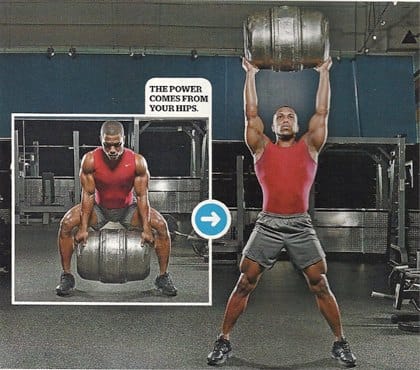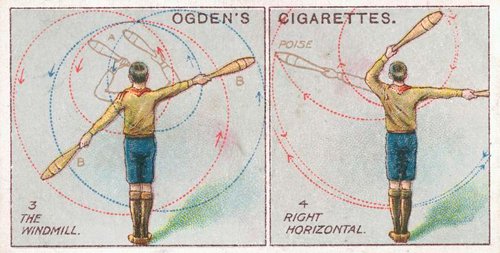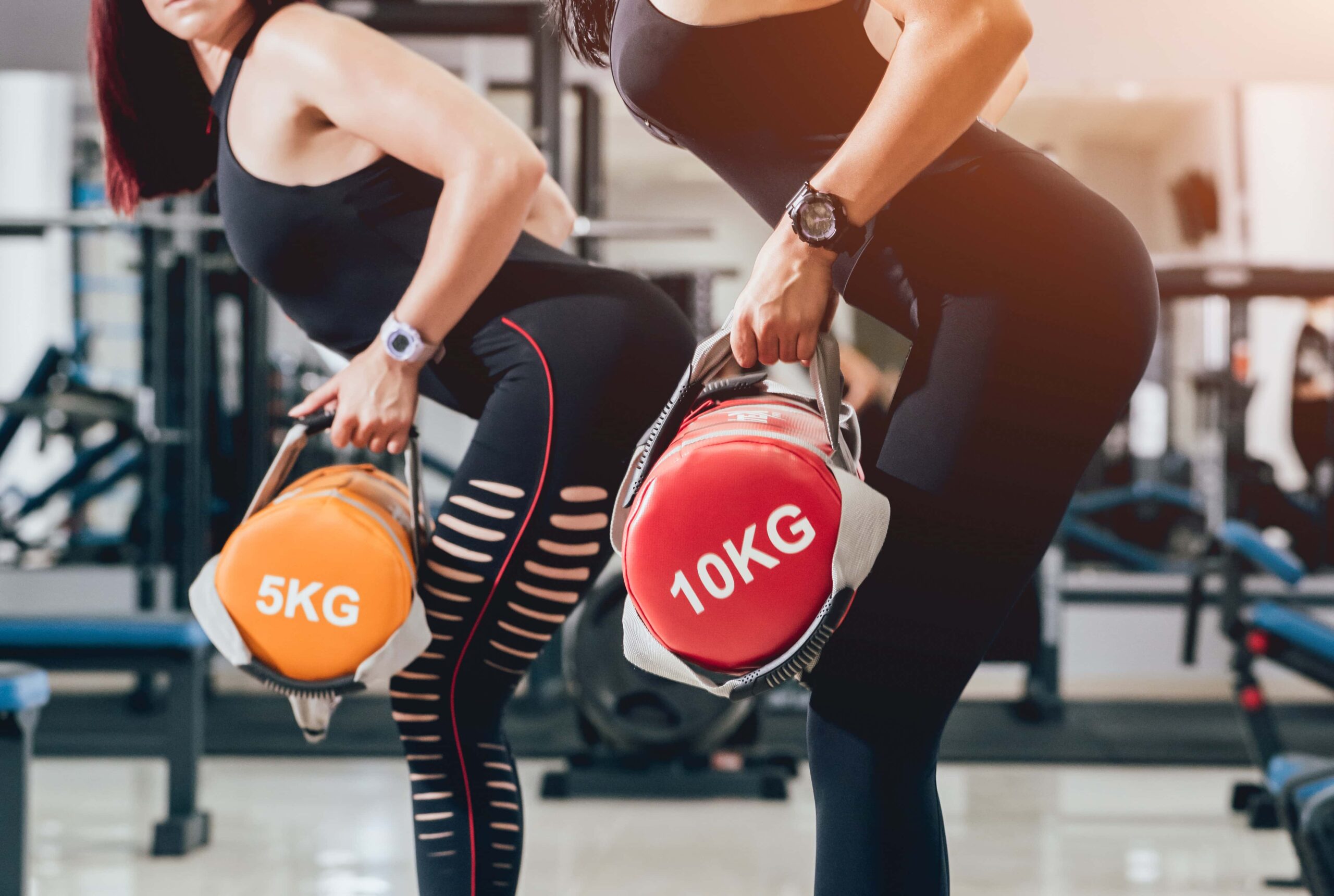The effects of COVID-19 have forced the combat athlete to change his or her routine. Especially when it comes to "Combat Arts Strength and Conditioning Achieving Peak Performance." Change however, can provide a platform for growth when it is accepted with an open mind and a sincere desire to improve.
While gyms are closing and workout resources seem limited, the combat sports practitioner can advance his or her individual strength and conditioning by applying the use of unconventional tools and methods.
Change is Calling Us to Become Resourceful
Are resources really lacking? Perhaps this quarantine period can be a time for you to experiment with new exercises and training materials?
In a world full of fancy machines and fitness trends, it is hard to know where to begin when old familiar options are no longer available. What is often overlooked is the fact that a person’s own bodyweight and a minimal amount of space are all that is necessary to complete a killer workout. Aside from the use of bodyweight exercises, the athlete can begin looking around the house or in local areas for ways that he or she can improve their fitness.
Adapt or Rescind! Which Option Will You Choose?
The warrior finds ways to adapt and improvise regardless of the situation! Turning a negative into a positive was demonstrated by former charity boxer Mike Dawes after the suicide death of his friend and boxing coach in 2013. Following this tragedy, Dawes started his own charity boxing event titled, IT Heavy Hitters which helps raise money for suicide prevention.
If one is looking to excel in any field, he or she must at times step outside of the norm and embrace what may help them to get ahead of their competition. We work too hard to lose the strength and conditioning prowess that we have earned. We owe it to ourselves to advance or at least maintain our level of conditioning so that we can prevail in our next quarrel or during our next bout of sparring.
Unconventional training tools can be used to replicate or supplement a conventional training routine. The tools and methods of training listed below will inspire an unorthodox demand on the body and the mind.
Keg Training
Keg training has been used in strongman training circles for ages and its benefits for strength training are eminent. The keg can be filled with water, dirt, sand, cement, or lead shot but make sure to test the weight consistently while you fill it to assure that it is not too heavy before you seal it.
The uneven, shifting weight of the keg will be more difficult to lift and maneuver than the traditional dumbbell, barbell, or kettlebell. The holds on the keg will inspire grip, forearm, and wrist strength.
Keg training is particularly useful for the combat athlete because the awkward, shifting of weight replicates the uneven resistance of an opponent.

Sources: Men's Journal
The effect of wrestling the keg through different movements imitates the style of resistance you would get from opponents in wrestling, and most other martial arts.
Sports Conditioning Specialist, martial artist and fitness trainer with the International Sports Science Association, Daniel Regan expressed his opinion on the benefits of keg training in an article of MMArising.com.
In this article Regan states that the consistent change of balance during keg exercises provides a great way to train when trying to mimic the dynamic aspects of combat sports. He also mentions that “You can leave the keg empty, which gives it a base weight of around 30-35lbs. While this is not a great amount of weight, it can be ideal for working long conditioning programs intended to build muscle endurance.”
During real competition there are no chalked, symmetrical weights to be lifted but rather odd objects and weird grip placement options. The odd shape of the keg forces your body to stabilize itself while you’re lifting, a skill you don’t develop as well by merely training with barbells and dumbbells.
The keg can be used for different exercises including but not limited to presses, squats, cleans, snatches, bent over rows, keg walks, overhead lifts and carries, deadlifts, curls, and tosses.
Training with a keg can help improve conditioning, build upper back strength, build explosive power, and enhance core strength. By calling a local beverage barn or beverage distributor, you may be able to acquire or purchase a used, empty beer keg. You may also want to consider asking or paying a neighbor or a local bar for an empty keg that may have been previously used.
Battle Clubs
Indian and Persian club swinging practices date back thousands of years to the training methods of ancient Hindu soldiers and wrestlers. In years past the robust and undefeated Indian wrestling champion Great Gama as well as “The god of wrestling” Karl Gotch both employed the use of battle clubs to help build strength endurance and promote functional ability.

In the modern era, world renown strength and conditioning coaches and martial arts practitioners Steve Maxwell and Scott Sonnen both endorse the use of battle clubs to help develop strength, endurance, and functional ability.
On Maxwells website Maxwellsc.com, the former Pan American and world BJJ champion describes his thoughts on battle club training when he claims: “Clubs nurture a very unusual strength, a specific strength that's very useful for grapplers, martial artists and MMA skills.”
There are two different types of battle clubs, the Indian club, and the Club bell.
Indian Clubs
Usually weigh between one and two pounds and they generally measure up to about eighteen inches long. Indian clubs are a great tool for warming up and they can help strengthening the smaller muscles and tendons in the shoulder. They also help improve shoulder and elbow flexibility. Grip, wrist, and forearm strength is enhanced with the regular use of these tools.
Club Bells
Can weigh up to forty-five pounds and they provide a great option for developing strength endurance in the core, the back, and the shoulders. The uneven distribution of weight in the club bell taxes the wrist and forearms as well which helps develop vise like grip strength.
The rotation of the weight when used during the practice of certain motions of battle club training help to improve the strength of internal stabilizer muscles in the joints of the upper body. Indian club training ensures you work your shoulders using their full range of motion, thus providing more complete shoulder strength and flexibility. Both Indian clubs and battle clubs demand the practitioner to develop body coordination and a nonstop routine can get the heart rate soaring. Both types of clubs can be used to rehab injured shoulders.
Sandbag Training
As with keg training, the lifting, throwing, or carrying of a sandbag forces the trainee to battle the shifting of weight throughout the entire movement. It is different than keg training because the containing surface of the sandbag is not solid as in that of the keg.

Hence the bag will be harder to grip and the weight distribution can prove to be more unpredictable.
Certain movements will strengthen the torso and hips, which can facilitate greater force transfer through the body during sparring and grappling bouts.
Using sandbags can help the athlete learn to brace and stabilize when lifting and moving odd objects. Sandbag training is especially useful for those who train with a gi because of the grip application involved with lifting and holding the bag.
2008 Judo Olympian, nationally ranked freestyle wrestler and National Champion in Brazilian Jujitsu, Matt D’Aquino demonstrates how he applies sandbag training to his strength and conditioning routine in his video series Sandbag Training for Grapplers.
Prominent Strength and conditioning coach Matt Palfrey authored an article on the website tribesports.com titled “5 benefits of sandbag training” in which he stated, “there are few other training tools that offer the same level of challenge as the sandbag.
Plus, it is perfectly suited to unconventional drills like loaded carries, sprints, drags and throws - all excellent for anyone who wants to improve sports performance. And the sheer brute strength needed to train with sandbags develops strong shoulders, legs and backs like few other things.” Palfrey authored two noteworthy books on the topic Sandbag training for MMA and Combat Sports and The Complete Guide to Sandbag Training.
Sandbags can either be bought or they can personally be constructed with the use of a duffle bag, a canvas bag or a backpack, some garbage bags and duct tape.
Ascending Intervals
Hill Running
World renown doctor and exercise physiologist Dr. Bengt Saltin described the usefulness of hill running for athletes in an article on the website runinowords.com. In this article Saltin described that “runners who train on hills have much higher concentrations of aerobic enzymes – the chemicals which allow your muscles to function at high intensity for long periods without fatigue.
Dr. Saltin then described that athletes who run on hills have proven to be less likely to lose fitness when they take time off from training.”
Being that the combat sports athlete must be able to function at a high intensity for long periods of time without fatiguing if he or she wants to advance in their sport and since these same athletes must take time off while recovering from injuries or allotting for downtime outside of competition, why would they not implement hill running into their routine?
Eight division world champion boxer Manny Pacquiao and UFC hall of famer Tito Ortiz have been filmed using hill training to enhance their conditioning and build leg strength during training.
Sprinting or running uphill and jogging or walking downhill will correlate best to real world application for the combat athlete as heart rate levels will naturally raise and lower during sparring and competition. For extra resistance, add some weight to a vest and hit the hills for a number of rounds or for a specific time. Add pushups or abdominal exercises at the top of the hill for an added element.
Stair Training
Running stairs can improve speed, strength, and explosiveness in the lower body. Anerobic endurance can be enhanced when the athlete sprints or jogs on the way up and jogs or walks on the way down as an interval workout.
Former king of Pancrase, MMA champion and Muay Thai fighter Bas Rutten and former MMA champion and NCAA Division 1 national wrestling champion Mark Kerr wore weight vests while running stairs in the documentary film The Smashing Machine which followed Kerr on his rise and fall as an MMA fighter.

Carrying dumbbells while running stairs can add resistance and improve grip strength for fighting. Adding pushups or another upper body exercise at the bottom of the steps can transform stair climbing into a full body workout.
Man on Man Training
Before weight training became well known combat athletes relied primarily on their own bodyweight and on the bodyweight of their training partners to enhance their strength and conditioning levels. Were these athletes strong and conditioned? Absolutely!
The best and most practical way to condition yourself for the combat sport that you practice is to consistently practice your sport. Both live sparring and technical drilling using the resistance of your partner will provide you with the conditioning and strength most necessary for your specific discipline.
Fedor Emelienenko who is a four-time Sambo word champion, a Russian Judo champion and quite possibly the greatest heavyweight mixed martial artist of all time described his insistence on buddy weight training over resistance type training in an article on the website Dynamotickets.ru: “I completely refused iron because power training is absolutely replaced by wrestling in the stalls, standup wrestling – working with a partner.
I do not do kettlebells or barbell now. The bar does not give the endurance that you train in the fight. Weight for muscle building is the weight of the enemy as well as his power. Most of the time in my training I do endurance exercises, that is, wrestling. Hence the sensitivity of the partner.”
Some exercises that can be done to help build practical strength for your sport are fireman’s carry walks or squats with a partner on your back, baby carries, wheelbarrows, touch sparring, pad work, pummeling with a partner’s resistance and sumo style wrestling.
Four-time NCAA Division 1 National Wrestling Coach of the Year and Division 1 hall of fame wrestling coach J. Robinson applies the use of the possum carry exercise during his team practices. This unique man on man exercise adds an extra dynamic to his routine of conditioning his athletes.
All that is needed for this exercise is a partner and some open space as one individual lays on his back and clasps his arms and legs around his partner’s upper body. The other individual (who is on all fours) will run in a bear crawl carrying his partners weight for an allotted distance.
Swiss Ball Training
World famous strength and conditioning coach Marv Marinovich got MMA great BJ Penn in fabulous shape for two of his lightweight title bouts. In Marinovich’s book ProBodX, the former NFL lineman explains how he makes use of the swiss ball when he trains the athletes that he works with.
The swiss ball can be leaned on or laid upon in substitute for a bench but the instability of it demands accentuating use of stabilizer and core muscles. The swiss ball also helps to develop balance. Bench press bent over row, pushups with legs on ball, knee ups and crunches are examples of some traditional exercises that can be done using the swiss ball.
Be Like Water and Oppose Rigidity
Bruce Lee once quoted, “Do not be assertive, but adjust to the object, and you shall find a way around or through it. If nothing within you stays rigid, outward things will disclose themselves.”
Do you use what you are given to make the best use of your situation or condition? A snowstorm can supply the athlete with an opportunity to supplement traditional exercises with shoveling for conditioning. Those who live near a beach can benefit from the added, uneven resistance of sprinting or wrestling in the sand.
Bulgarian bags can be constructed with minimal equipment and can be used to swing, slam, or put on your shoulders. The individual can use this tool to run, squat with or lunge with. Powerlifters have long implemented the use of chains and bands to improve acceleration and to accentuate rate of force development.
An opposition to rigidity and a receptiveness to the opportunities and resources that are available, can allow us to incorporate training methods that are fun and unique. Such an approach can combat staleness and improve the athletes desire to advance their physical condition.
Mental barriers can become an obstacle for the individual stuck in a routine. In order to combat this, one can step out of their comfort zone from time to time and embrace the change that will inevitably come.
By incorporating beer keg, sandbag and man on man training, battle clubs, sandbags or ascending intervals into a routine, the combat athlete can use this time of change to rise above his or her competition. After all, "Combat Arts Strength Training is the Foundation of a Fighters Success."
If we constantly seek to use what is available to advance, we can improve in ways that we may never have considered before. Perhaps the restrictions and lockdowns from COVID-19 can assist you in breaking through a plateau? At the very least one can use this time to experiment with different training methods that can be implemented into a routine.
